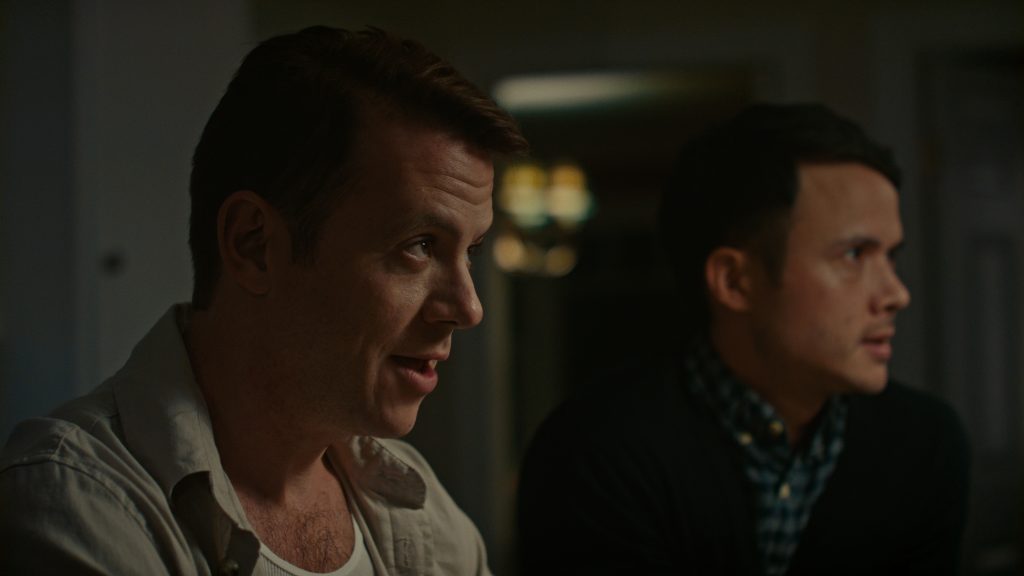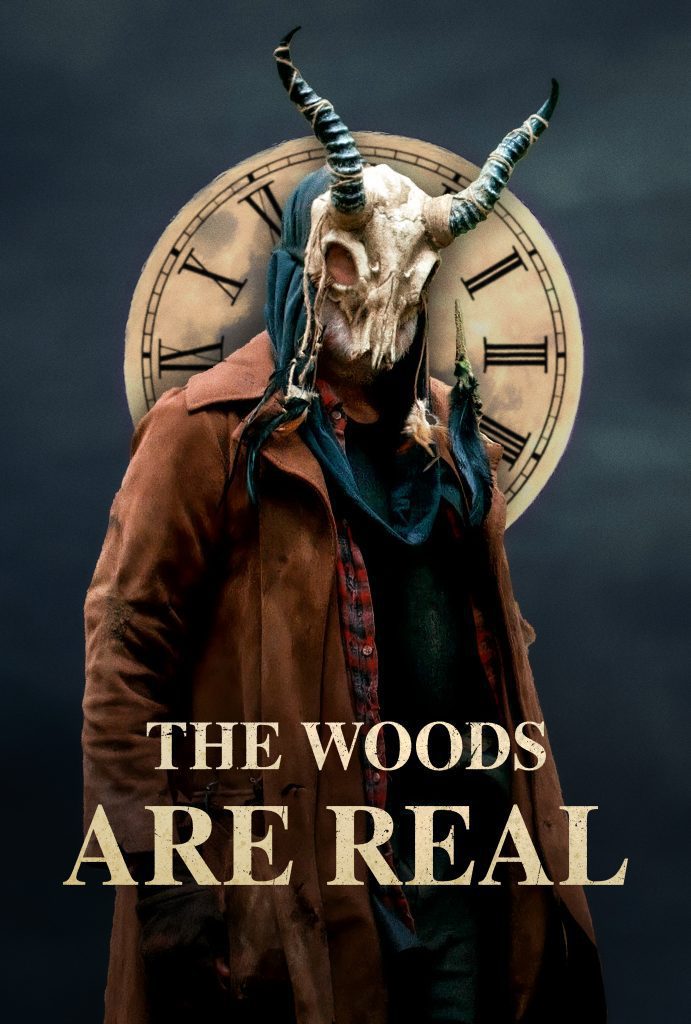Folk horror has long been the domain of Britain’s great filmmakers, who have tapped into the ancient pagan undercurrents pulsing through the nation’s rural landscapes. From the cult classic The Wicker Man to more recent eerie entries like A Field in England, these films have found fertile ground for existential dread and ritualistic terror on England’s soil. But the new film The Woods Are Real proves you don’t need to cross the Atlantic to feel that bone-chilling folk horror atmosphere take root.
Written by Matt Dellapina and Sean Christopher Lewis and directed by Alix Lambert, The Woods Are Real transports those distinctly English folk horror vibes to the forests of America. At first, it seems to be treading overly familiar urban satire territory, with a tense dinner party scene introducing a quartet of somewhat insufferable hipster archetypes – the pretentious gay couple, the mixed-race pair rife with racial and class tensions. When one half of the couple, the awkwardly named Joba (Dellapina), is gifted a woodsy retreat by his friends, you brace yourself for yet another round of smug self-parody.
But once Joba and his girlfriend Quincy (Chinasa Ogbuagu) actually arrive at the remote cabin, stepping literally and figuratively out of their modern comfort zones and into the primordial forest, The Woods Are Real finds its disquieting folk horror footing. Strange occurrences commence, from a haunting old gramophone that seemingly predicts the couple’s doom to the eventual disappearance of their rental cabin and vehicle, stranding them in the wilderness with only a jar of maraschino cherries for comfort (or torture).
It’s at this point that Campbell Scott arrives as the film’s malevolent personification of woodsy menace, an ancient forest being known only as the Woodsman. Scott is utterly transfixing in the role, his mere presence elevating the material from derivative mumblecore navel-gazing to a legitimately unnerving folk horror entry.

As the Woodsman begins to psychologically and physically torment Joba and Quincy, toying with them like forest fauna caught in his grasp, Lambert’s film finally hits its menacing stride. The director has a knack for eerie compositions amidst the gnarled foliage, and stages some chilling confrontations between the increasingly frantic couple and their mysterious, soft-spoken tormenter.
What elevates The Woods Are Real above mere woodland slasher pastiche is the way it taps into the existential themes that define the best folk horror. Rather than leaning into well-worn pagan symbolism, the film seems to draw more from ancient biblical tales like the Book of Job, using the forest as a realm to explore man’s insignificance in the face of vast, uncaring natural forces.
In that sense, The Woods Are Real feels like a uniquely American take on folk horror’s preoccupations – replacing the English countryside’s associations with ancient druid rites with the remorseless, uncharted wilderness of the New World. It’s as if the film is asking whether the pagan spirits fled Europe and took root in these very forests when the colonial settlers first arrived.
So while The Woods Are Real may stumble at first with its strained hipster satire and some character work that never quite lands, once it dives into the untamed woodland realm it becomes an effectively moody, unsettling descent into primal terror. With Scott’s transfixing work at its core and an intelligent existential curiosity driving the dread, it’s a folk horror tale that puts uniquely American roots down in the genre. These woods are indeed real, and you’ll never look at them the same way again.

